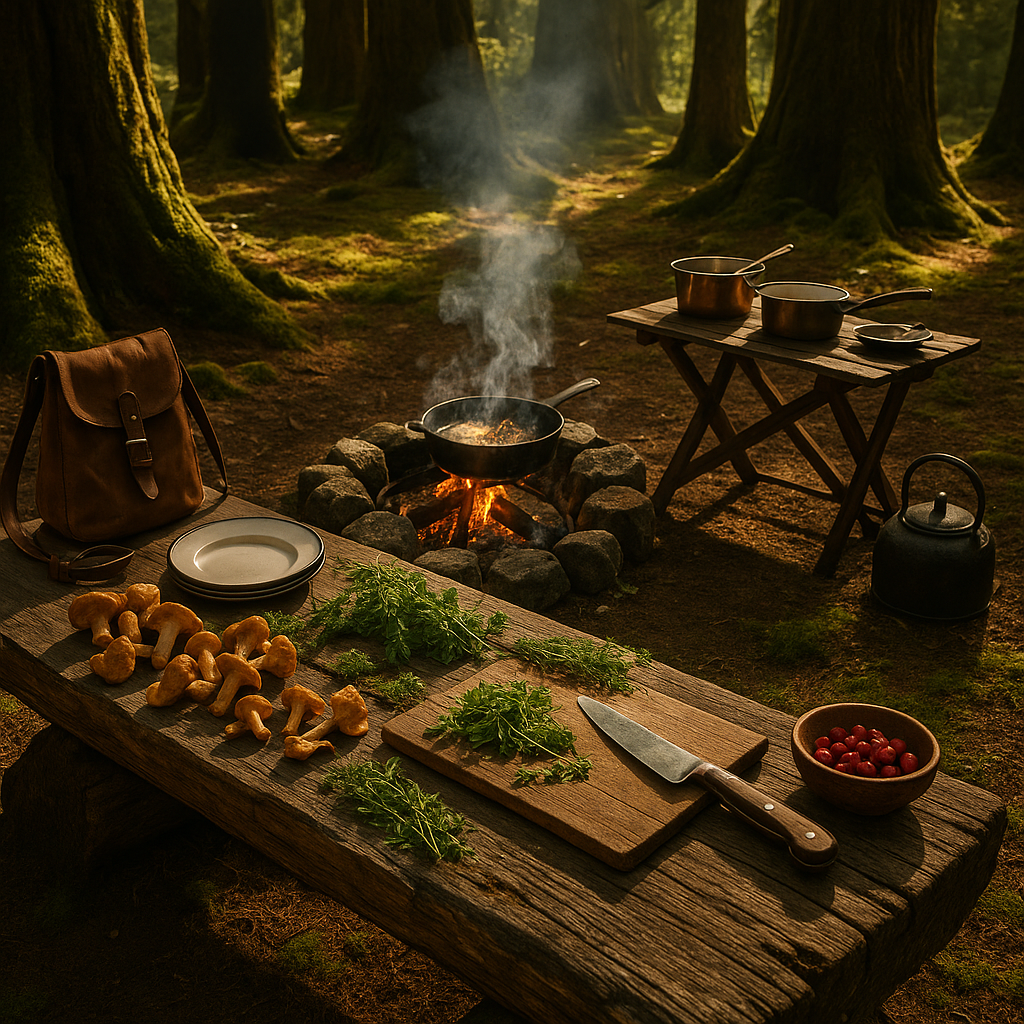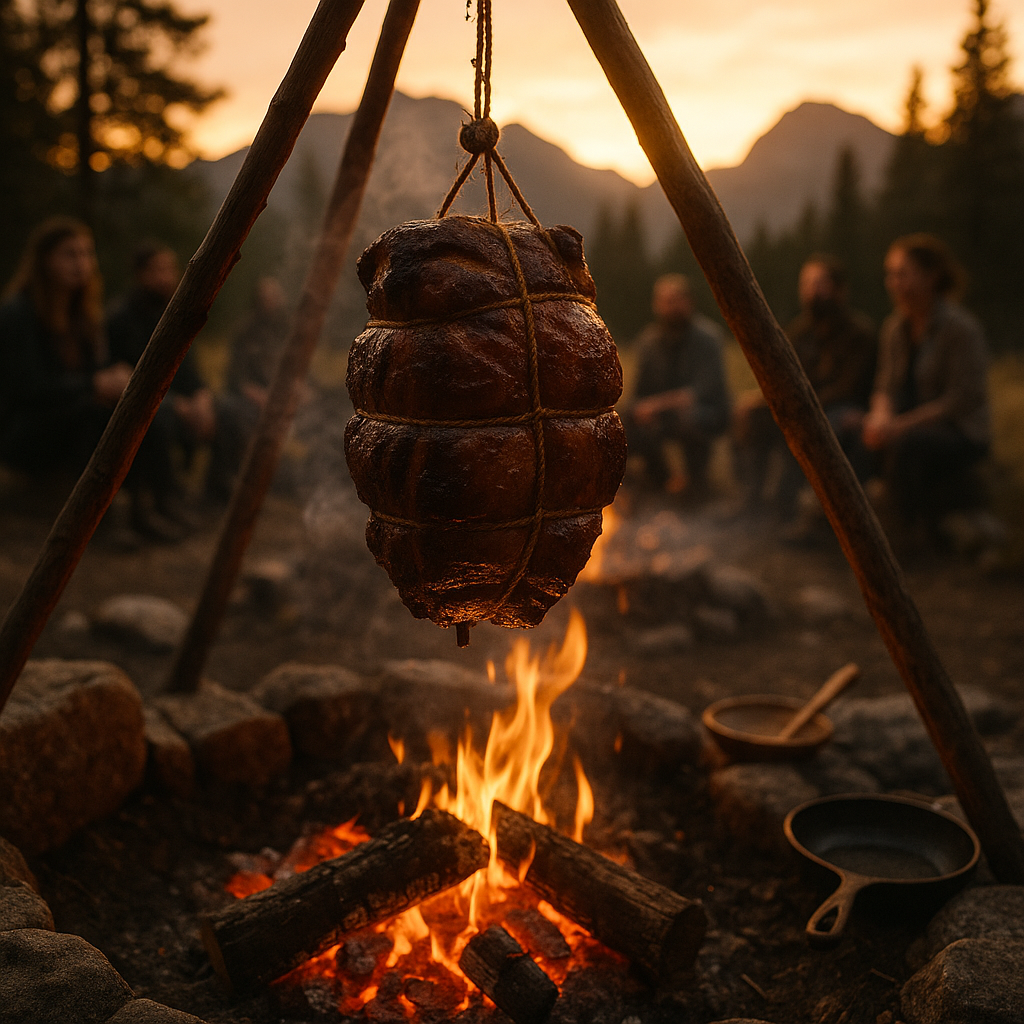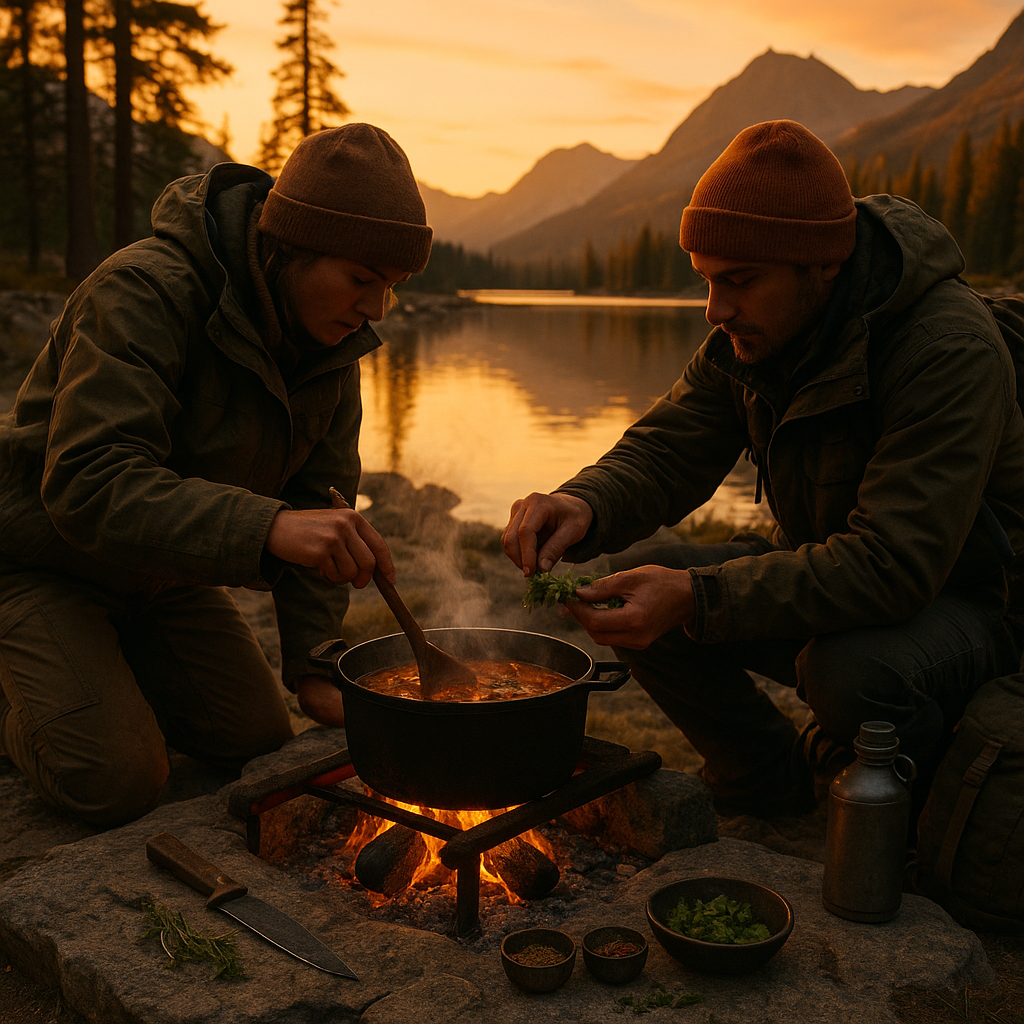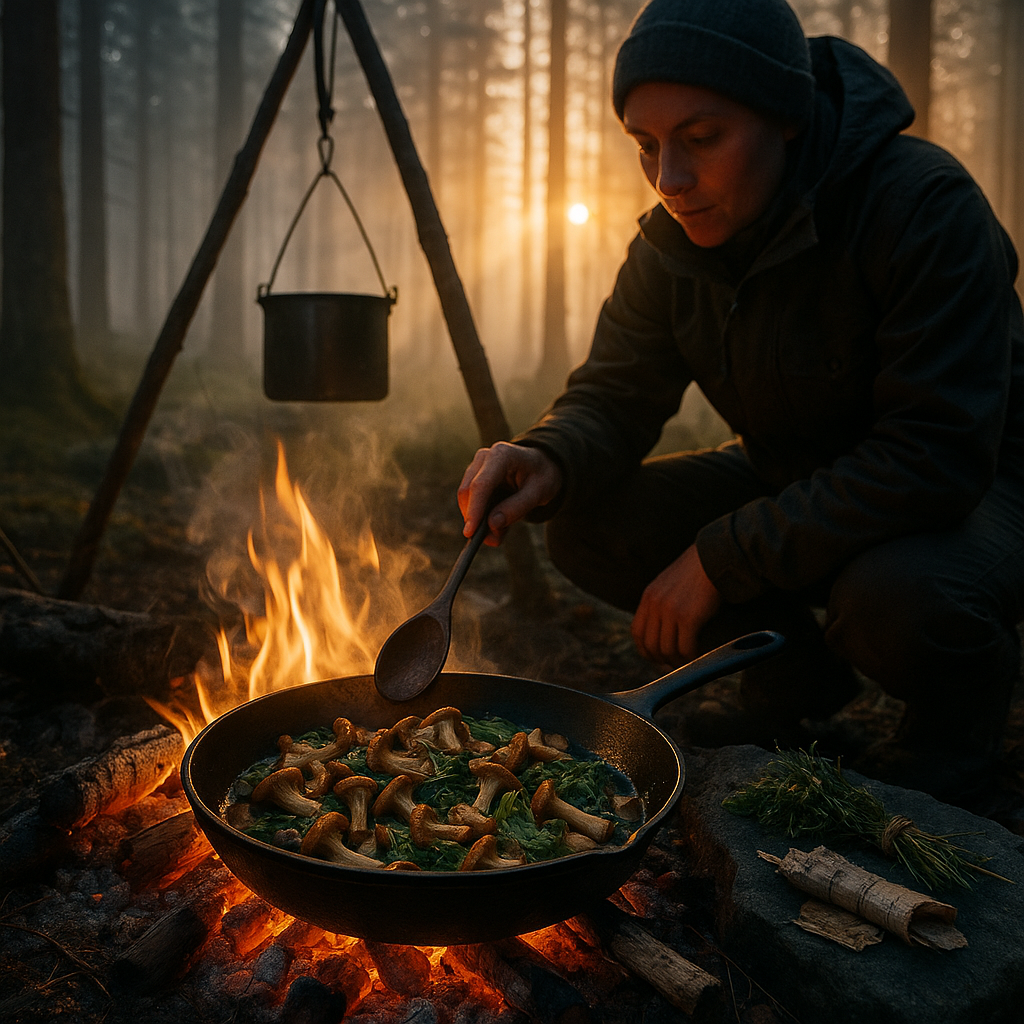Key Takeaways
Deep forest cooking is an immersive blend of foraging, creativity, and connection, shaped by nature’s cool, dappled embrace. It beckons you to seek out secluded clearings, use wild ingredients, and master methods that transform open-air meals into unforgettable experiences. Here are the essential inspirations to guide your deep forest culinary adventures:
- Discover hidden natural kitchens beneath shaded canopies: Find secluded forest nooks offering serenity, shelter, and organic resources for tranquil outdoor cooking.
- Elevate your menu through wild edible foraging: Identify safe, flavorful plants, mushrooms, berries, and herbs unique to shaded woodland habitats. These local treasures infuse every dish with a sense of place and season.
- Turn forests into functional cooking havens: Construct makeshift kitchens with stones, logs, and leaves. Harness the materials around you to build fire-safe workspaces that harmonize with the forest’s natural flow.
- Weave tradition and innovation with bushcraft cooking: Combine ancient skills like fire-roasting, stone baking, and leaf steaming with modern culinary touches. This fusion yields dishes that are both deeply rooted and remarkably refined.
- Adapt techniques for shaded environments: Learn how the canopy’s coolness, moisture, and filtered light affect fire-building, cooking times, and ingredient prep. Sharpen your instincts to thrive amidst variable forest conditions.
- Make each meal a story: Let your feast narrate a tale using the sights, scents, and flavors of the woods to weave a living memory for all involved.
- Join wild cooking workshops to hone your craft: Specialized courses empower both newcomers and seasoned adventurers to confidently forage and cook in the forest’s remote heart.
Ultimately, deep forest cooking is not just about sustenance. It’s a way to savor wild abundance with artistry and joy, unfurling flavors and stories in some of the world’s most untouched corners. Ahead, discover hands-on guidance, seasoned advice, and inspiration to help you create your own remarkable culinary experiences beneath the leaves.
Introduction
Not every kitchen is confined by walls; some are carved from green twilight and framed by ancient trees. Deep forest cooking draws you into these secluded woodland sanctuaries, where the damp earth is fragrant with wild herbs and moss. Here, every meal unravels as a journey, each bite shaped by discoveries tucked amid tangled roots and sun-flecked foliage.
Learning the art of cooking in the deep woods isn’t simply about preparing food in remote places. It means reading the landscape for the perfect shaded enclave, mastering foraging under towering trees, and transforming unassuming forest materials into story-rich feasts. Together, let’s wander beneath the canopy, where age-old traditions and adventurous creativity combine, and explore how you can recreate this magic, turning wild woods into extraordinary kitchens.
Stay Sharp. Stay Ahead.
Join our Telegram Channel for exclusive content, real insights,
engage with us and other members and get access to
insider updates, early news and top insights.
 Join the Channel
Join the Channel
Finding Your Forest Kitchen
Finding the right spot to cook within the heart of a shaded forest is both an intuitive art and a practiced skill. These hidden sanctuaries, hidden between towering trunks and carpeted in velvety moss, offer magical settings for open-air meals that honor both place and moment.
Reading the Forest Floor
The search for your ideal forest kitchen begins at ground level. Survey the land for subtle signs; generations of fallen leaves settling into gentle hollows, providing natural shelter and a soft, stable canvas for meal preparation. The most inviting foundations often feature:
- Natural stone outcrops for prep surfaces, windbreaks, or fire rings
- Tall, mature trees with high canopies that allow smoke to rise while preserving shade
- Moss-laden terrain that signals consistent moisture and stable ground
- Clearings of 10–15 feet, giving ample space to move, gather, and cook
A perfect forest kitchen feels both protected and open to the world, where overhead branches hush the wind, and the filtered light makes every ingredient seem to glow.
Creating Your Culinary Sanctuary
Once you’ve pinpointed your woodland haven, the transformation into a working kitchen unfolds with a blend of observation and ingenuity. Consider how natural features can enrich your cooking experience:
- Wind Awareness: Watch the movement of leaves and listen for the hushed whisper of the breeze. Position your fire and workspace away from prevailing winds for smoke control and warmth.
- Light Play: Notice the arc of sunlight throughout the day. Choose an area where dappled light offers comfort and enough visibility for safe cooking.
- Organic Storage: Seek hollow logs or stone pockets to keep ingredients dry and cool. These natural pantries can be a game changer for longer stays.
- Water Access (with Caution): The gentle gurgle of a nearby spring adds ambiance and can be useful, but always set up a safe distance from moving water to avoid contamination and wildlife encounters.
Most successful forest kitchens incorporate toppled logs for seating, raised surfaces for prepping, and a breakfast nook where the canopy feels like nature’s own dining hall.
Safety and Sustainability Considerations
Respect for both your own safety and the delicate forest balance is paramount. Infuse every meal with environmental mindfulness by:
- Setting up a fire pit with found stones, positioned far from overhanging branches and dry brush
- Clearing at least 3 meters around your fire and cooking station for safety
- Creating distinct areas for cooking, eating, and storing food to reduce the risk of curious wildlife visitors
- Practicing strict “leave no trace” principles; plan your waste management and leave the site cleaner than you found it
Treat every cooking venture as a form of stewardship. The traces you leave should be of gratitude, not disturbance, preserving wild sanctuaries for future explorers.
Foraging Integration
Incorporating foraged ingredients is one of the most rewarding aspects of deep forest cooking, infusing your dishes with the spirit of place. As you scout your location, observe for:
- Edible mushrooms (oysters, morels, or chanterelles) nestled on damp logs (always confirm with reliable guides or local workshops)
- Aromatic herbs such as wild garlic, wood sorrel, or ramps thriving in shaded beds
- Season-ripened berries like blackberries or elderberries accenting the edge of your clearing
- Edible flowers and fresh shoots that bring both color and flavor to your plate
Foraging requires humility. Harvest with a light touch, always leaving ample bounty so the forest can continue to nurture wildlife and future wanderers.
Seasonal Adaptations
Every forest kitchen transforms with the passage of seasons, each period offering distinct rewards and challenges.
Spring:
- Follow natural drainage to avoid waterlogged spots during thaws
- Seek young greens and newly emerged mushrooms for vibrant seasonal dishes
- Prepare for unpredictable conditions with shelter options and moisture-resistant gear
Summer:
- Retreat to the deeper shade of old trees for cooler cooking
- Embrace the abundance of wild berries and tall herbs
- Schedule your culinary sessions during soft morning or golden-hour evenings
Autumn:
- Layer fallen leaves for extra insulation beneath your workspace
- Take advantage of the mushroom peak and the last of the wild fruits
- Plan for early sunsets; bring lanterns or harness safe firelight for ambiance
Winter:
- Select naturally sheltered nooks for warmth, using rocks or snowbanks as windbreaks or improvised refrigeration
- Celebrate the heartiest roots and preserved ingredients, focusing on simmered stews and baked fare
- Embrace the quiet as an ingredient itself, adding depth to each fireside meal
As the rhythm of the forest shifts, so do your tools and techniques, inviting a cycle of continuous learning and seasonal celebration.
Conclusion
In the hush beneath ancient trees, where moss softens your stride and the world feels far away, building a kitchen becomes more than a necessity. It is an act of reverence, expressing your respect for wildness and your willingness to become part of its story. The most memorable cookfires aren’t just about nourishing the body; they are about sharing honest meals in places where the sun and wind are the only witnesses, and where flavors intertwine with unforgettable moments.
Stay Sharp. Stay Ahead.
Join our Telegram Channel for exclusive content, real insights,
engage with us and other members and get access to
insider updates, early news and top insights.
 Join the Channel
Join the Channel
By learning to read the landscape, gather thoughtfully, and adapt with each changing season, you transform any patch of forest into a soulful refuge. Here, nature’s raw abundance becomes the inspiration for dishes steeped in creativity, memory, and gratitude.
Looking ahead, the greatest adventures in wild cooking belong to those who merge old wisdom with personal innovation. As you seek new corners of the woods, let each meal strengthen your connection with the earth and remind you that authentic flavor thrives not in perfection, but in the honest joy of discovery. The true magic of deep forest cooking lies not only in what you create over the flames, but also in the stories, laughter, and quiet belonging you carry home with you





Leave a Reply